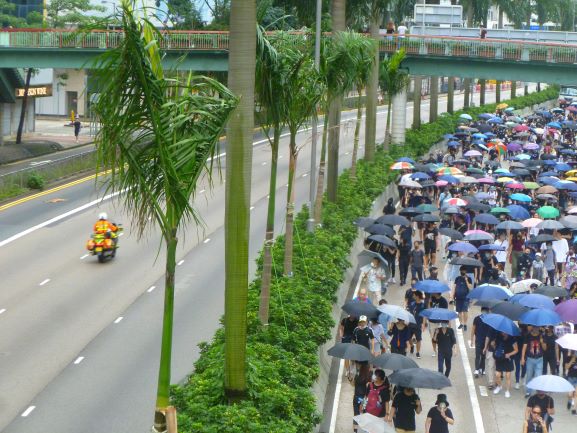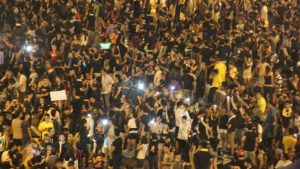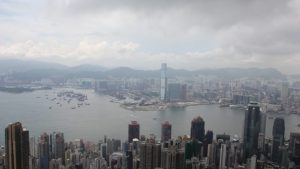By Chris Yeung —
The demise of the Civil Human Rights Front (CHRF), an umbrella body which organised all major protests in Hong Kong since 2002, symbolises the end of the story of the city’s peaceful protests. Worse and more sadly, it signifies the decline of the city as a whole and the end of the “one country, two systems” experiment.
Citing unprecedented challenges faced by the civil society, CHRF announced in a statement on Sunday they had decided to disband at a meeting on Friday. On Tuesday, the Professional Teachers’ Union, the city’s largest teachers’ body, announced they would close down, citing political attacks that came from “all directions.”
Shortly after the CHRF issued the statement, the Police was quick to warn the disbandment is not the end of the story. They vowed to actively investigate whether the group had breached the Societies Ordinance, insisting they had operated unlawfully since it was founded in 2002.
A Police spokesman said they would take legal action against any groups which were found to have breached the national security law and other laws regardless of whether they had been disbanded.
They did not explain why they had given approval to the applications of protests and rallies by the CHKF since 2002. It had also been normal and public information that police officers had put their heads together with the protest organisers to work out details such as the route of the rally and crowd control.
It was only until recently that the Police said the group had neither registered under the Companies Register nor the Societies Ordinance and that their activities could be unlawful.
Never mind those protests, including the landmark 500,000-strong rally on July 1 in 2002 and the two massive rallies in 2019, which saw one million and two million people taking part, were held with the Police giving a greenlight in the form of a permit of no-objection.
More intriguingly, Chief Executive Carrie Lam Cheng Yuet-ngor, like her predecessors, had given post-rally statements responding to the demands made by the protesters at those rallies. There was no mention of the legality of those rallies.
In 2014, the then chief executive Leung Chun-ying said after a rally held by the CHKF: “Friends from CHKF and other groups who organised this rally, you guys had worked hard.”
Leung was telling the truth when he addressed the CHKF as “friends” in 2014.
Flying the banner of peaceful and lawful protest, the CHKF had functioned as a platform for the people to express their views in peaceful, organised marches.
The July 1 march had become an annual occasion for civil society groups to come out to express their hopes and fears over a litany of issues ranging from democratic development, conservation, poverty to sub-divided rooms and ethnic minorities’ rights.
That the people were allowed to take to the streets in an orderly, peaceful manner with the Police exercised restraint and facilitated the expression of dissenting views had emerged as the best publicity of “one country, two systems.”
With no exception, the city’s chief executives had indeed cited the increased number of rallies and demonstrations to silence critics and cynics over their talk of doom and gloom of Hong Kong under the communist rule.
The Hong Kong story in the post-colonial era had been scripted under the framework of “one country, two systems” as an important part of the China story.
As China grows stronger, the ruling Chinese Communist Party is keen to tell the world the story of the nation’s peaceful rise.
To allow a capitalistic Hong Kong to keep its lifestyles and freedoms and an incremental development of democratic elections on the communist-ruled landmass could not have been a better public relations stunt to help portray a “credible, loveable and respectable China.”
Seen from that light, it could not be more ironic that China is now telling a vastly-different Hong Kong story in its own making, namely, the story of Hong Kong’s decline.
In a glaring resemblance to the death of the Professional Teachers’ Union, the disbandment of the CHKF followed a blitz of attacks by China’s official media and their mouthpieces in Hong Kong.
As if they had taken the order from the propaganda machine, the whole Government led by Mrs Lam with the aid of top officials and the Police acted swiftly to turn the PTU and CHRF they had called friends enemies, tumour and the like.
That could not be a worse way to tell the China story. As the world watchs how Hong Kong becomes a city no longer what it was under the communist rule, their image of China could hardly be “credible, lovable and respectable.”
ends




Be the first to comment on "End of protest group a sad Hong Kong story"